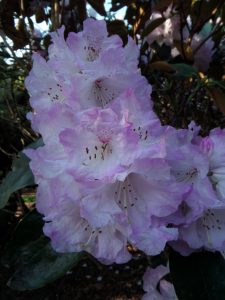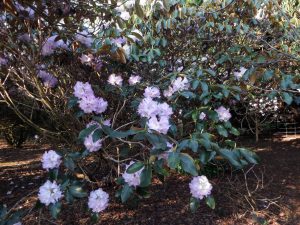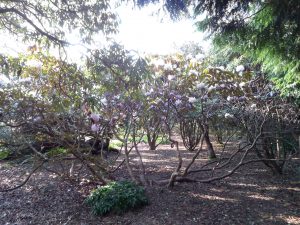Currently flowering profusely but tucked away at the back of a bed near Inverleith House is the large shrub Rhododendron campanulatum ‘Roland Cooper’
This plant was collected as seed in what is now the Indian state of Himachal Pradesh on the 20th of October 1916 by Roland Edgar Cooper. This was his last plant collection expedition for A.K. Bulley of Ness; cut short when Cooper volunteered to join the Indian Army Reserve of Officers, serving initially with the 1st Reserve Ghurkha Rifles on the North West Frontier of India which is now in Pakistan.
Rhododendron campanulatum is a widespread species in the Himalaya occuring from Bhutan in the east to Kashmir in the west and as a result show a fair bit of variation in colour and form. The original scientific description of R. campanulatum was published in 1821 by the Scottish Botanist David Don who went on to write the first Flora of Nepal. The original material was collected in Nepal and formed part of the large East India Company Herbarium distributed by Natanial Wallich.
This plant was given the cultivar name after recieving an Award of Merit at the 1964 Scottish Rhododendron Show which was held in Glasgow. It was described as being as being a distinctive form with its scented, predominantly white flowers extensivley shaded with mauvette with scattered crimson spots on the upper lobe and persistant sandy brown tomentose on the underside of the leaf.































Gavin Harris
19170014C is growing well at Dawyck Botanic Garden.